Resources
AVAC’s Resource Database contains educational and advocacy materials covering a wide range of issues on biomedical prevention of HIV, STIs, COVID-19 and emerging health threats—from research to rollout.
To search for clinical trials and detailed information on products in development, visit our Prevention Research & Development Database

Results
showing 1-10 of 21
The HIV Prevention Pipeline
This graphic shows currently available options for HIV prevention, newly approved and recommended treatment, and those in development.
Prevention Option:
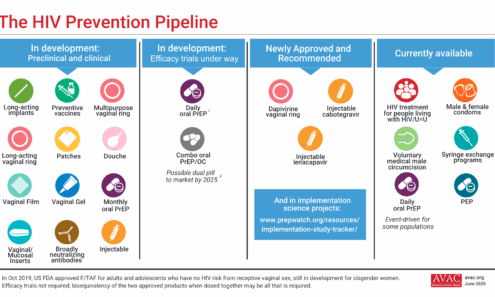
HIV Incidence, Age 15-49
Looking backward and then into the future, this chart shows actual HIV rates alongside projected rates with and without current prevention strategies (PrEP, VMMC, and free condoms).
Prevention Option:
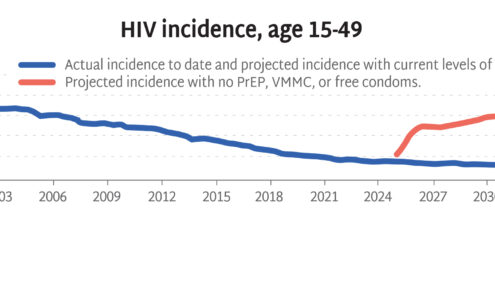
Current trends for investment in HIV prevention R&D by technology
Overall numbers by year. For more detailed information, visit www.hivresourcetracking.org.
Prevention Option:

hivresourcetracking.org
The most up-to-date and comprehensive field-wide estimates for HIV prevention and R&D globally.
Prevention Option:
20 Essential Resources – Condoms & Family Planning
Since the physical properties of condoms have not undergone substantial change, many people may forget the power of condoms as a family planning tool. This collection was created as a reminder to all of us that some methods continue to work even as innovations arise.
Prevention Option:
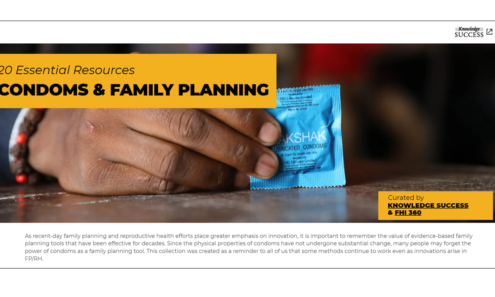
Internal Condoms: A Tool To Advance Sexual and Reproductive Health and Rights for All
This resource shares new data on the efficacy and importance of internal condoms, and includes critical new USAID condom procurement data that indicate the need for increased internal condom procurement.
Prevention Option:
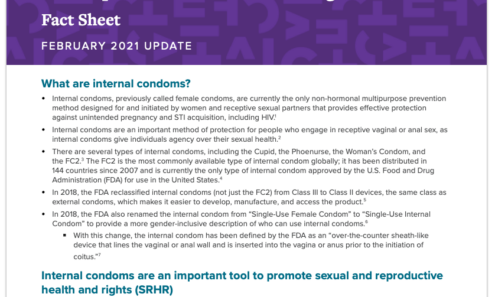
Research Fundamentals: What is partial protection?
In this episode, we explore the meaning of partial protection. Whether it’s condoms, a flu shot, oral PrEP or the dapivirine vaginal ring, proven products fall short of 100 percent protection against disease, and there’s a lot to know about how and why an intervention may offer imperfect but still useful protection.
Prevention Option:
AVAC’s “3D” View of the World: 2019 and beyond
This infographic lays out AVAC’s top-line recommendations from AVAC Report 2019: Now What? The recommendations fall into three categories: deliver — prevention programs whose impact is well-measured and -defined; demonstrate — next-generation...
Prevention Option:
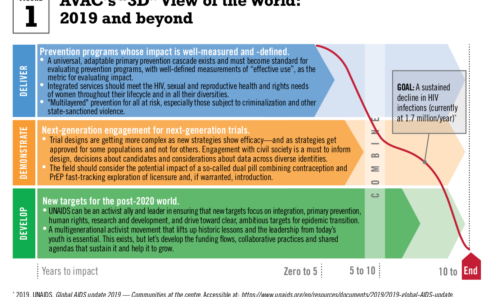
Visualizing Multisectoral Prevention: The DREAMS program theory of change
This is PEPFAR’s own visualization of how its AGYW programs can effect change. It’s notable for the definition of a care package that touches on the individual and her community, and for the way it defines a range of outcomes. There isn’t...
Prevention Option:
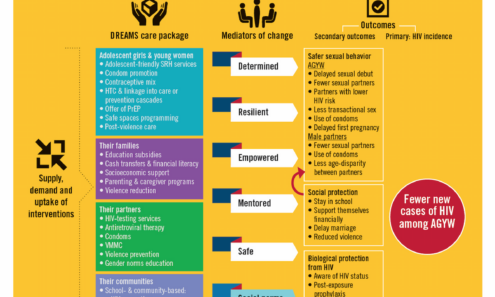
A Generic and Unifying HIV Prevention Cascade Framework
What get’s measured matters if and only if that measurement is linked to impact. The most common approaches to evaluating primary prevention don’t measure up. They measure commodities but not use. A count of the condoms or PrEP bottles handed to...
Prevention Option:
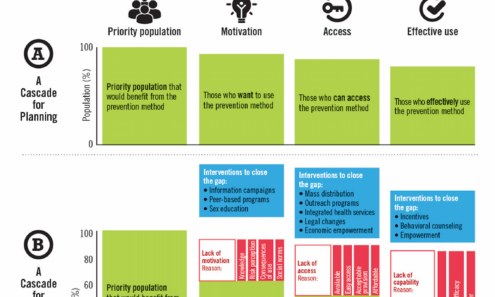
showing 1-10 of 21